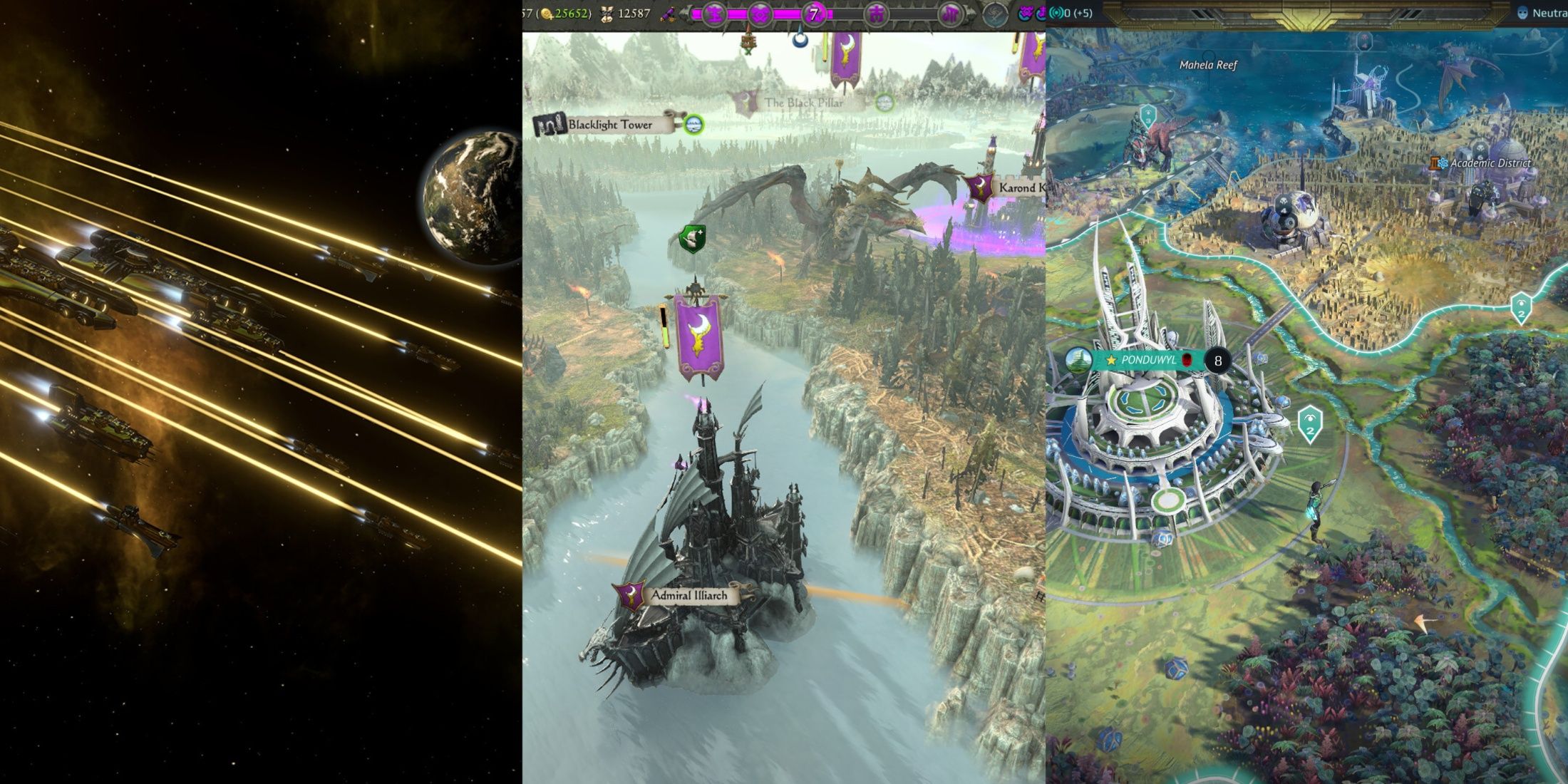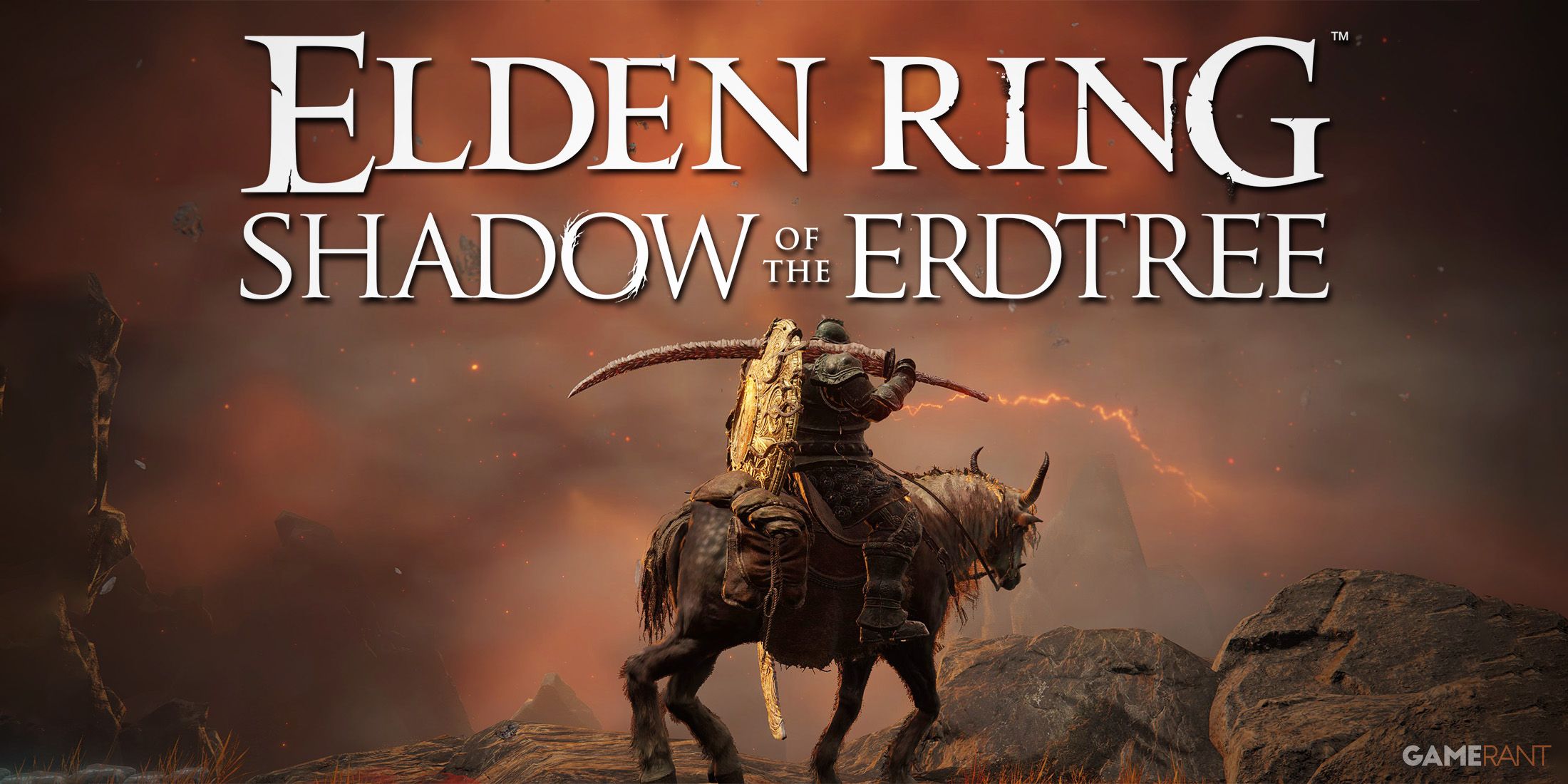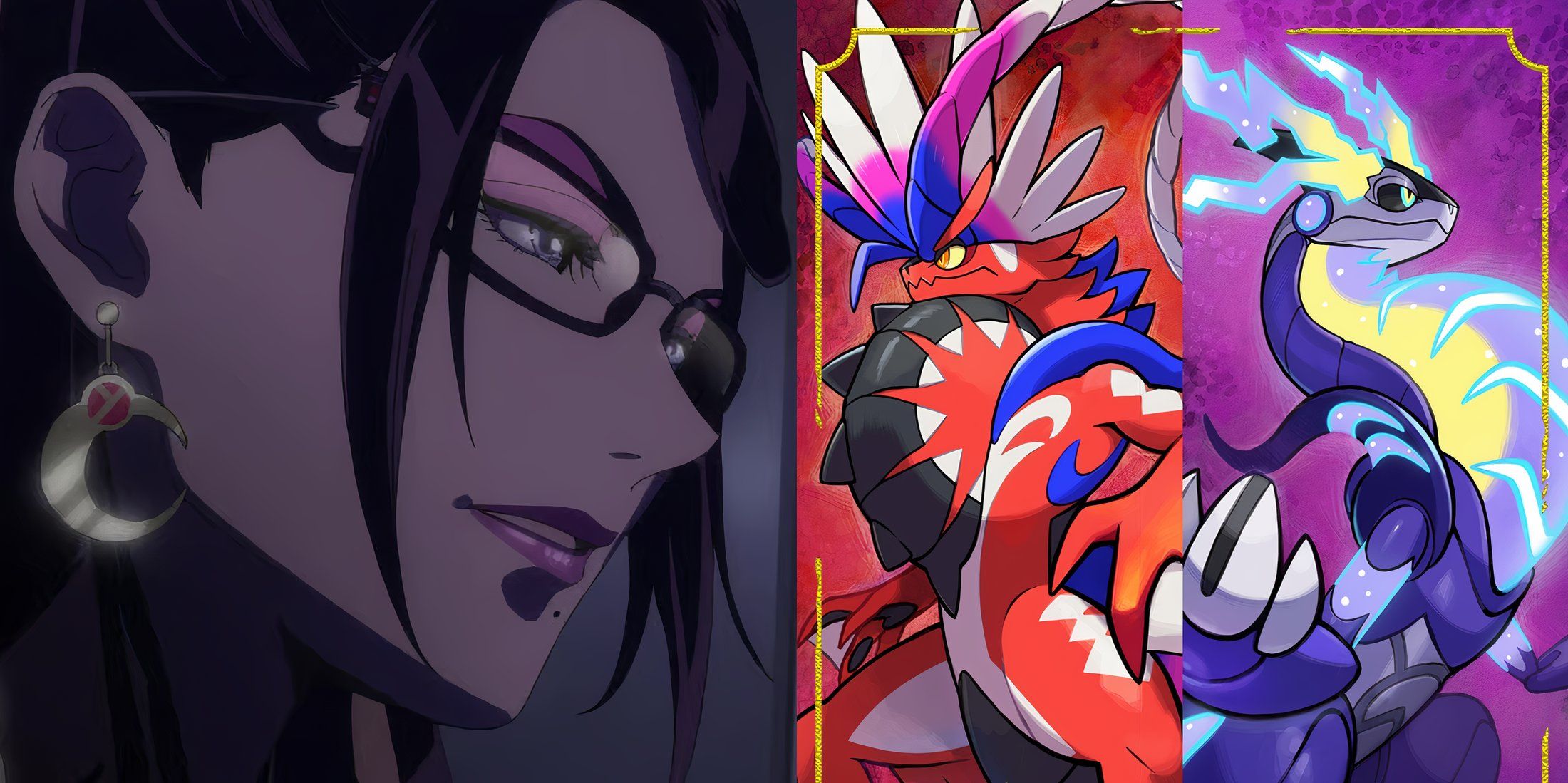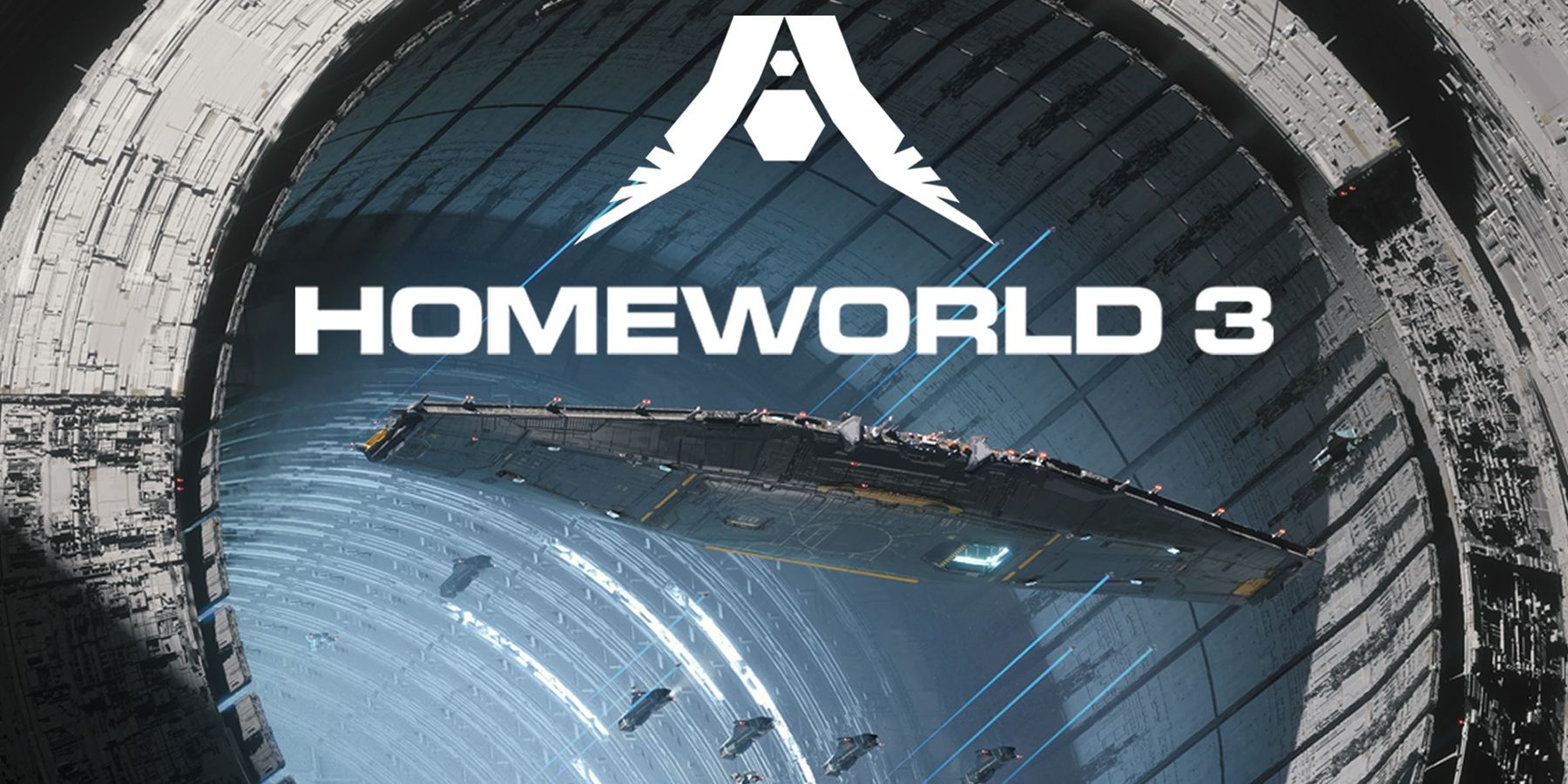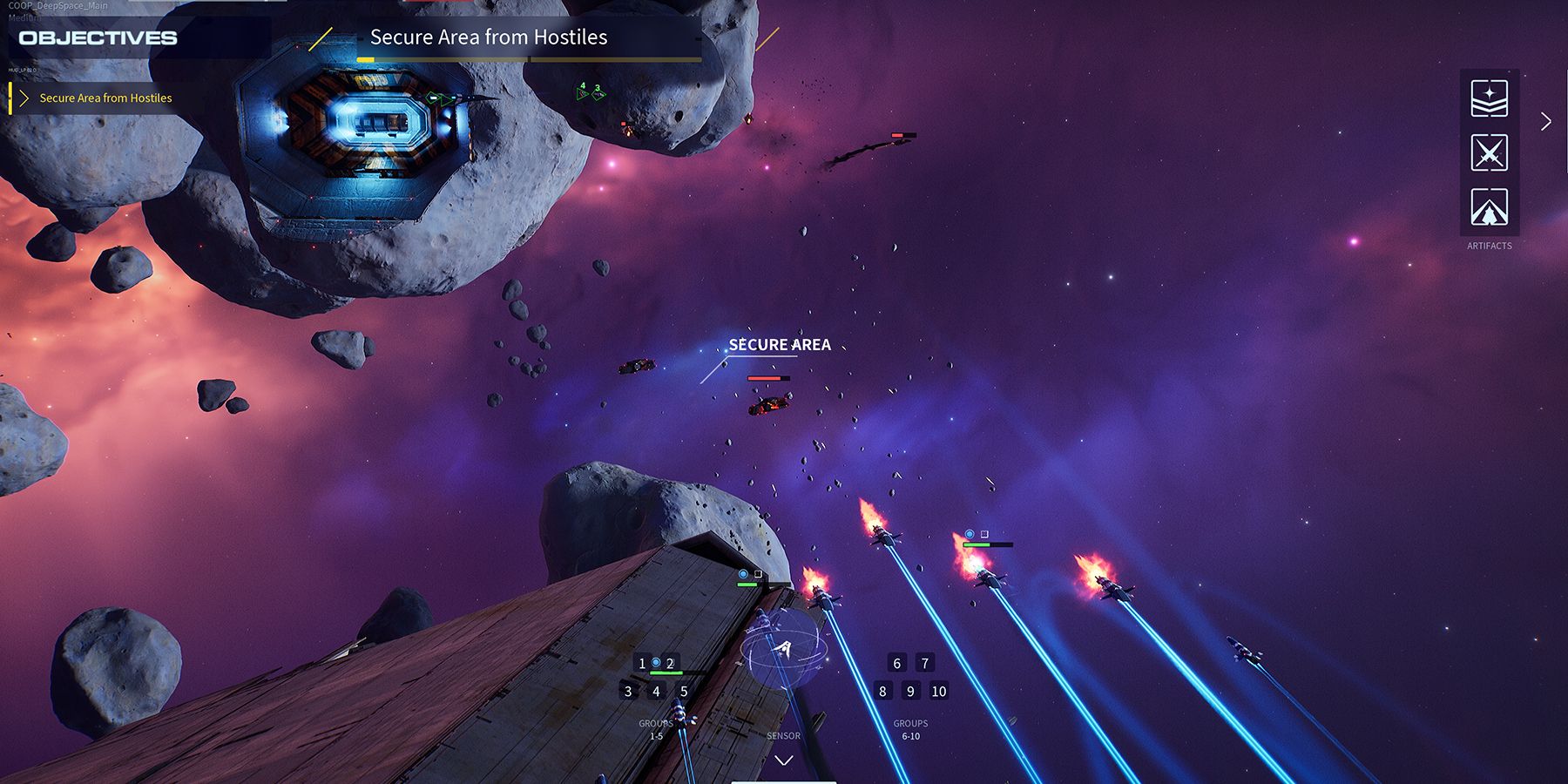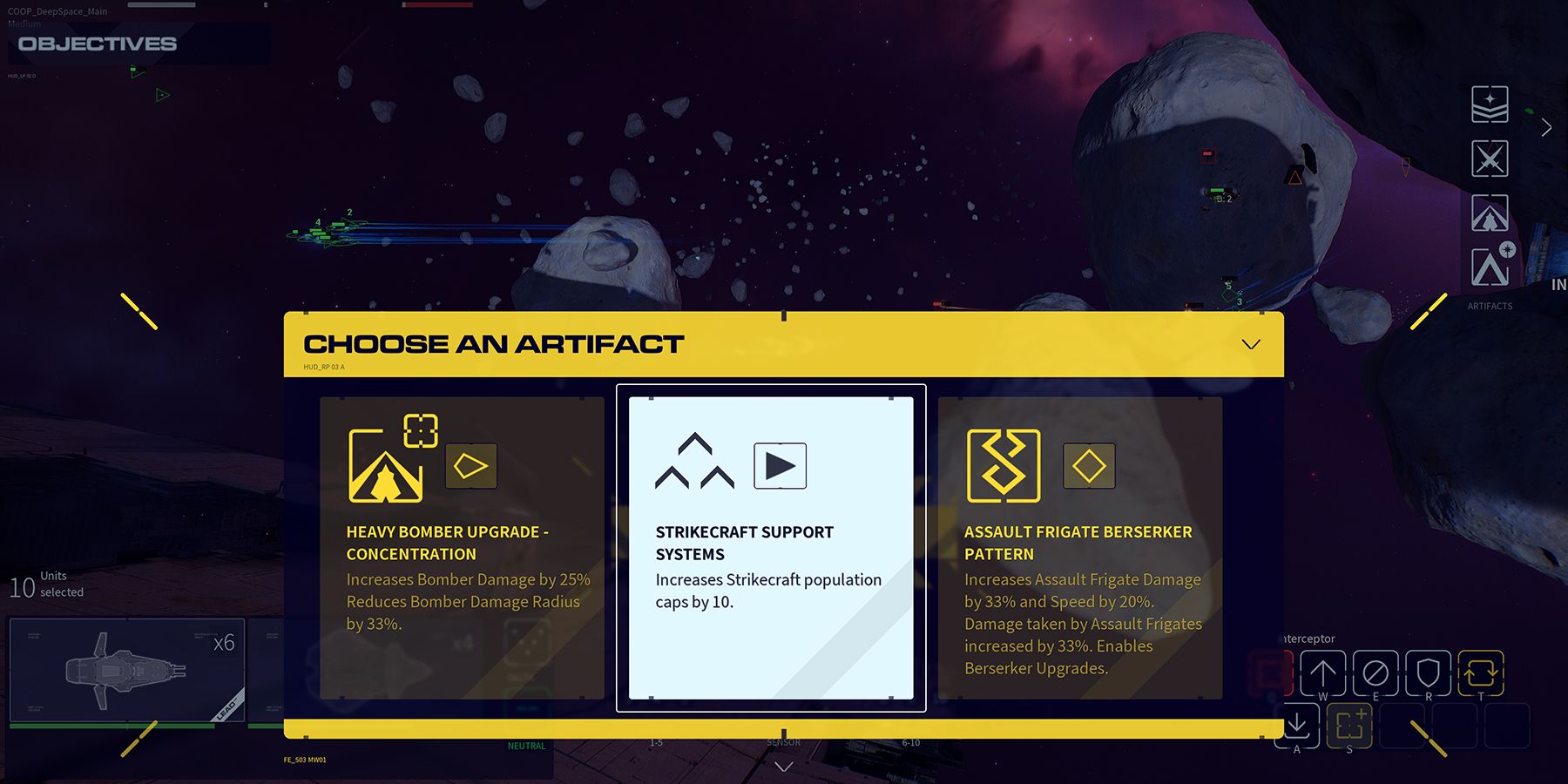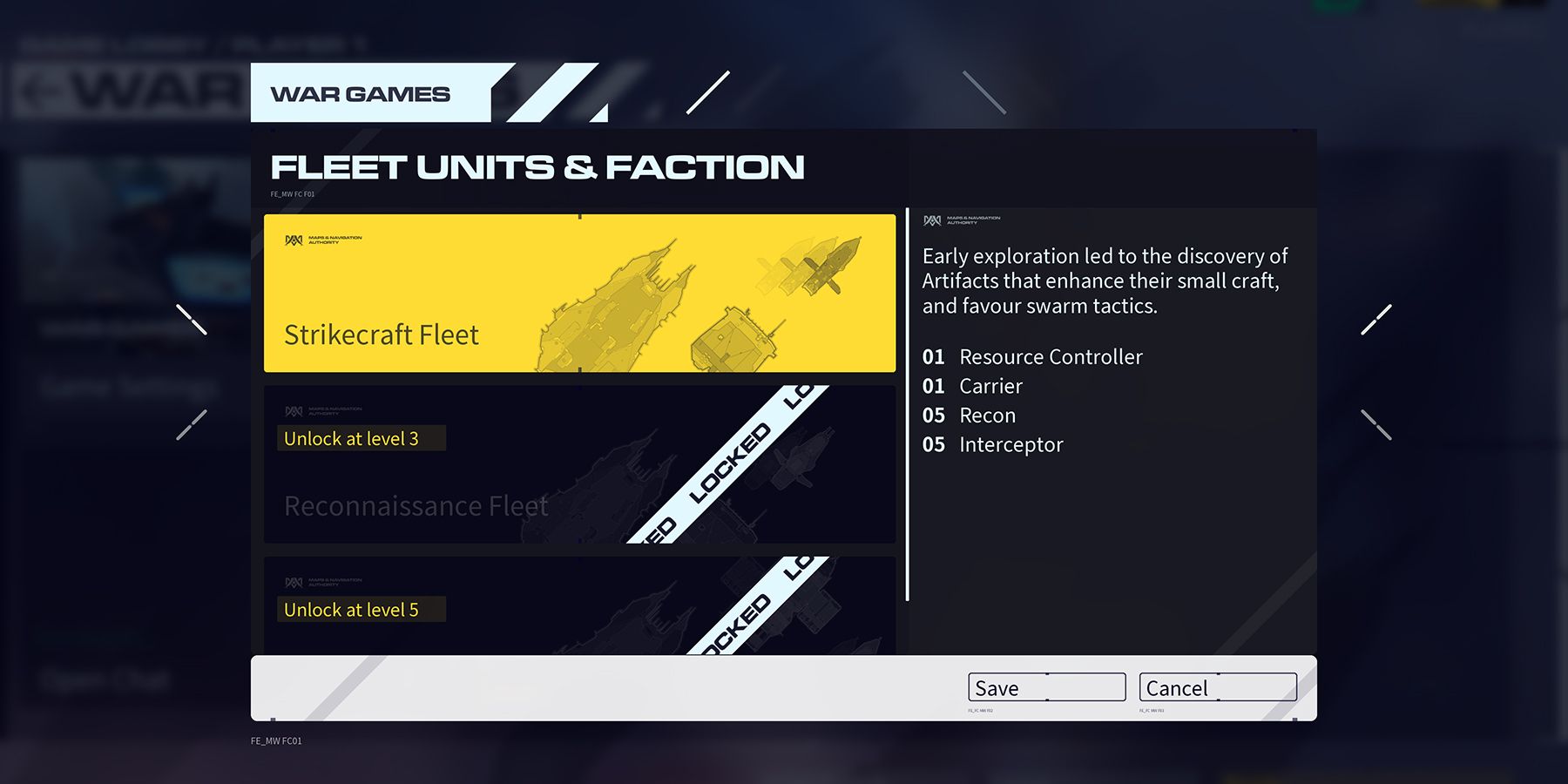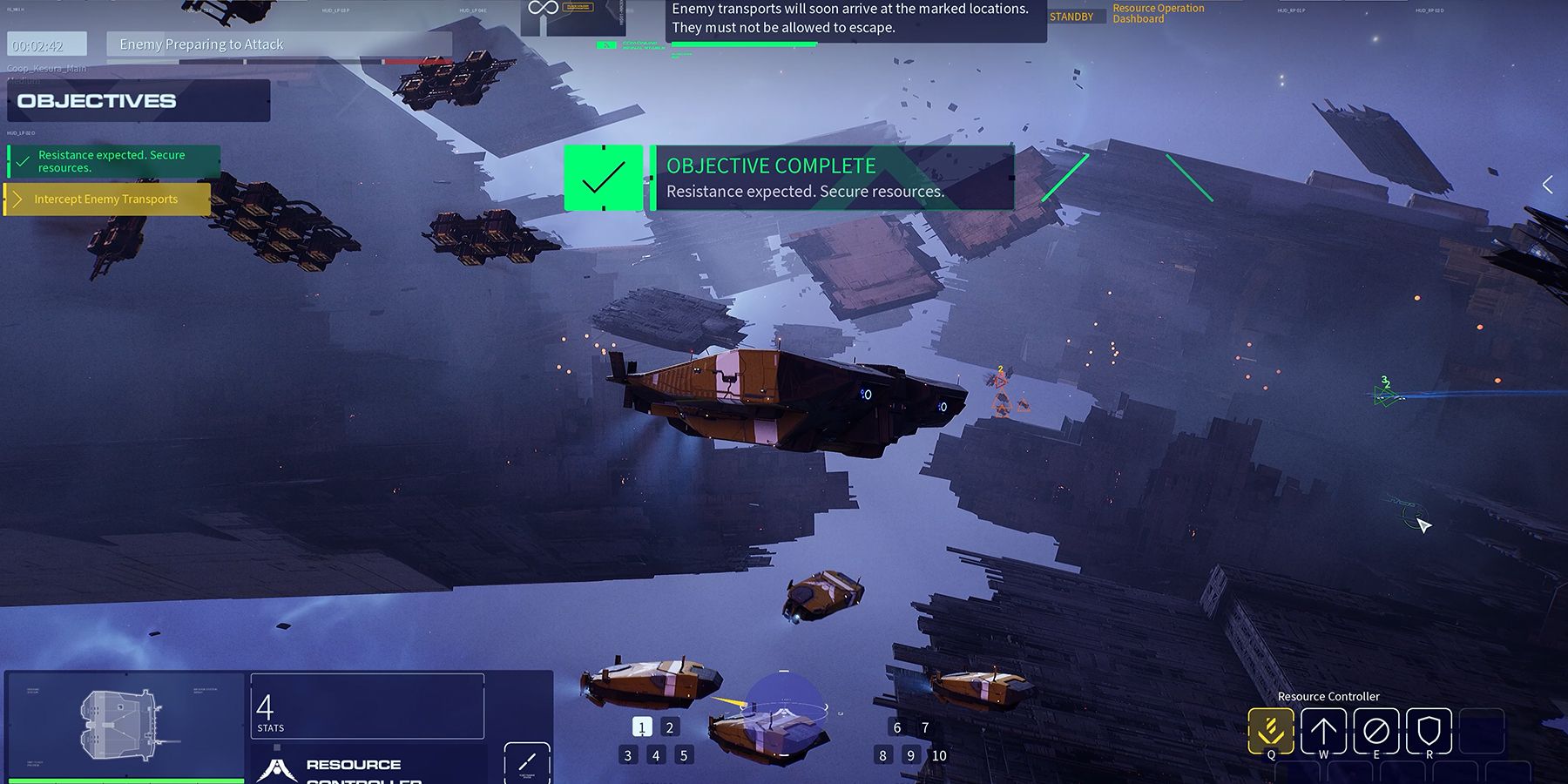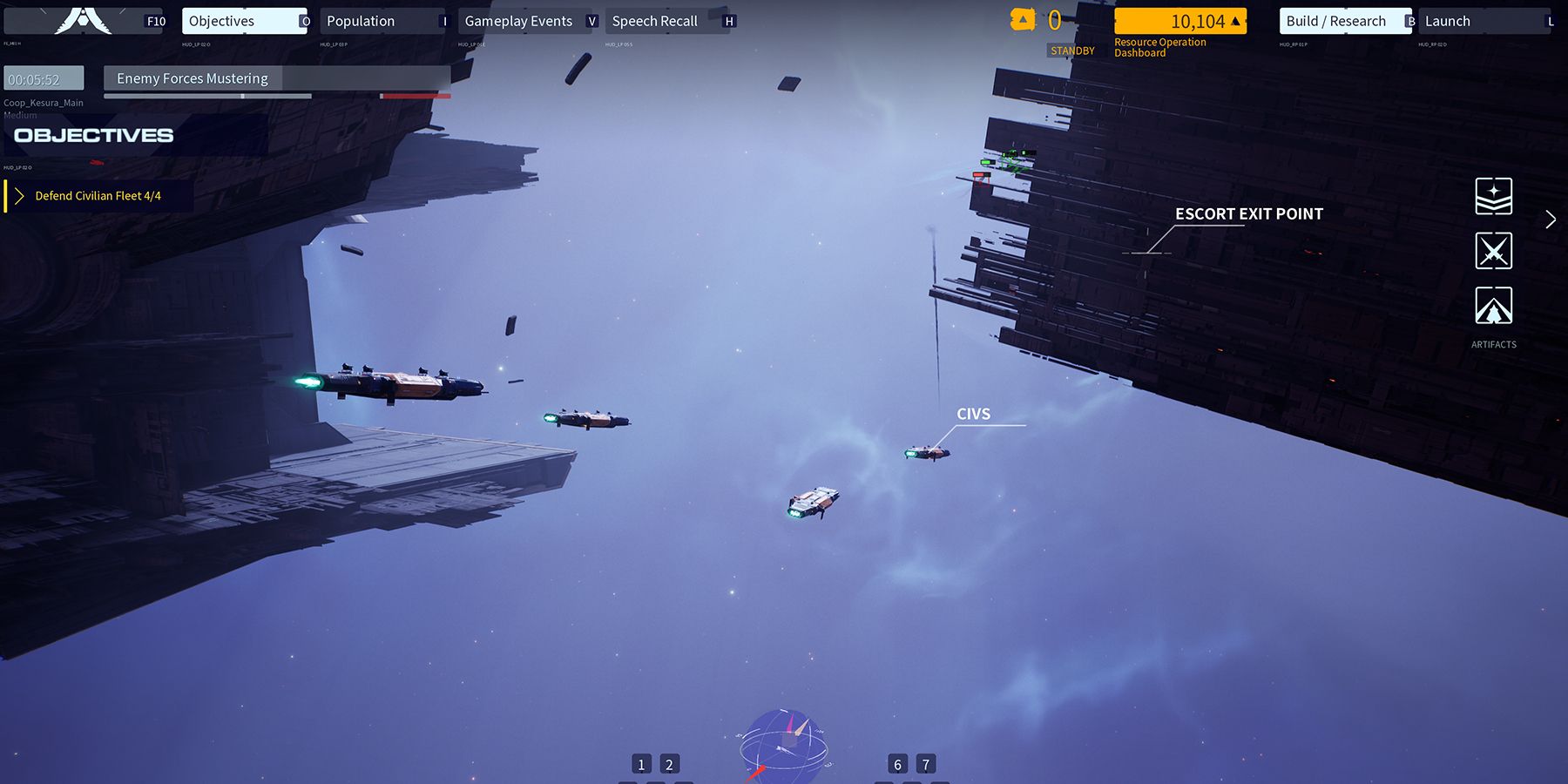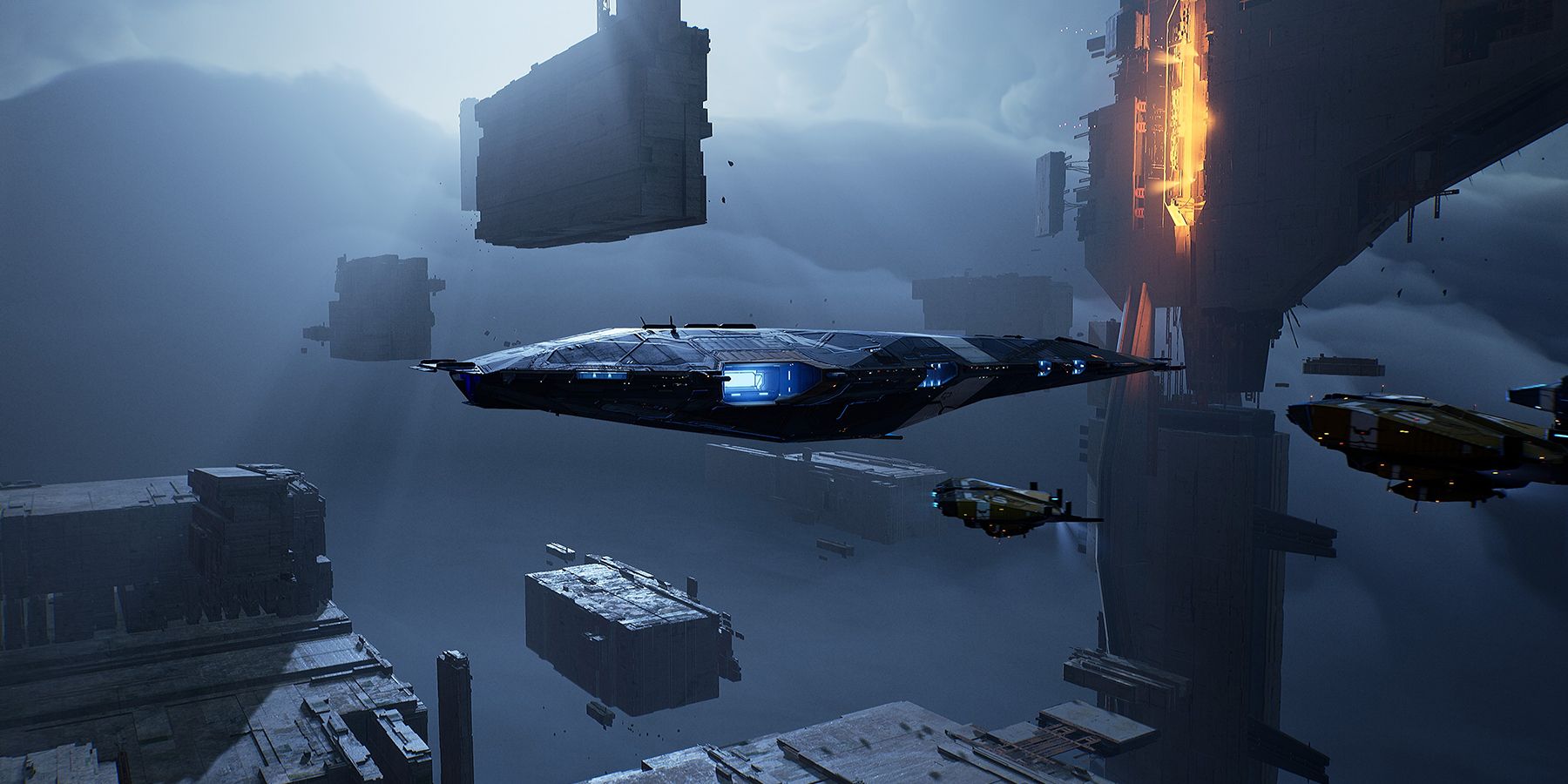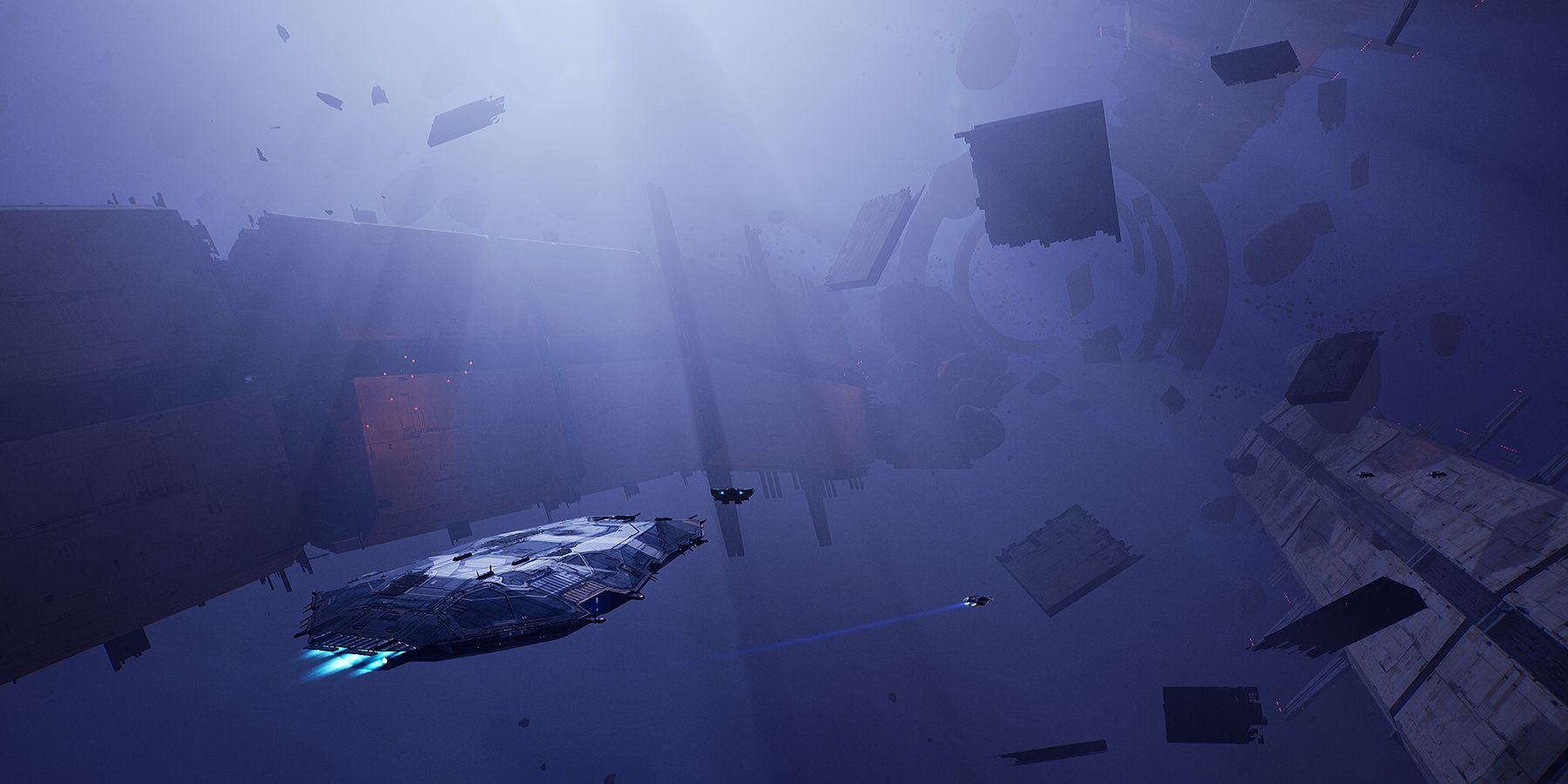Homeworld 3 is Blackbird Interactive's follow-up to the legendary series of real-time strategy games that have defined space combat since 1999. When the original Homeworld was released on PC, it brought a groundbreaking innovation to the strategy genre that is still largely unique to the series: 3D control of ships on both horizontal and vertical planes. This opened up a whole new world of tactical considerations, with fleets flanking from above and below and emphasizing the importance of positional strategy.
The series' third mainline entry seeks to continue the tradition of breaking new ground in the genre, this time with several innovations that should shake up gameplay even for longtime fans. Fully functioning terrain has introduced a new cover element that greatly enhances tactical play, and a new War Games roguelike mode will challenge players to work their way through a series of increasingly difficult missions with a persistent fleet while unlocking various powerful and synergistic upgrades. Game ZXC sat down with Homeworld 3 Senior Designer Andrew Oatway along with Andrew McCrea from Gearbox Publishing to discuss the new War Games mode and what it brings to the table for players. The interview has been edited for brevity and clarity.
Q: A roguelike twist is almost never seen in real-time strategy games. How did the team come to decide on this route? Were they inspired by certain games?
Oatway: My understanding is that it was actually part of our original pitch to Gearbox when we were making Homeworld 3. I joined the team after that point, but my understanding is that this was something that the team was interested in from the jump. We wanted to see if we could have a mode that brought some new fun twists to the RTS genre and see what we could make of that. I've been working on it for about two years, and I think it's really starting to come together. I'm actually really excited about what it is and the challenges that it's offering people.
Q: As you’re treading new ground for real-time strategy, have you faced any unique challenges when designing this mode?
Oatway: There's been a good handful of challenges. One of the things is that it is cooperative, it supports one to three players, so there are a few challenges that come out of that. One of them is making sure that it feels good to play if I'm playing solo or if I have three people. A lot of roguelikes have you controlling a single character, and so when we look at other things for inspiration, you have to take a step back and think, “Okay, but what if I can do arbitrarily many things at once? What if I can send five ships over there? What if I can send my three frigates over that way, and I can solve four problems all at the same time?”
Finding ways of looking at things, problems that very smart people have solved in other games, and thinking, “Okay, but how does this work when I can do multiple things at the same time?” was a fun challenge to solve.
Then there's also the networking component of it. If I'm rolling dice to determine what random objective spawns, how can I be sure that I'm rolling the same die on every different computer, at the same time? That was also some fun stuff, where if I'm determining a random spawn point for ships to come from, how can I make sure that I'm rolling the same die across all the different computers?
There have been some good technical and design challenges to solve that have actually been a lot of fun, like the rolling random dice thing was a fun afternoon of like, “Okay, but how do I shuffle an array?” I just did that in Unreal as opposed to getting one of our engineers to do it, because it's not rocket dentistry, but it was a fun little challenge to sink my teeth into for a couple of hours in one afternoon.
Q: Speaking of solo and multiplayer, how did you approach the difficulty scaling so that the challenge is satisfying for single players and groups?
Oatway: Right now, obviously, no numbers are final, and there are systems that I want to push further. This demo is going to provide us with a bunch of useful feedback for how to do things better because a lot of our play testing has been internally: people working on Homeworld 3. It turns out that when you're making the video game, you tend to get pretty okay at the video game.
So handing some proposed balance and asking a QA person to go through it and ask them, “Okay, how did that feel?” Every single time it's too easy. You need to start building a yardstick like “Okay, but if this QA says it's too easy, but also he plays the game blindfolded in his sleep, I need to scale that appropriately.” There's a bunch of work still to be done to make sure that balance works.
But generally, when I'm tweaking it for multiple people, I try to make the objectives that you get randomly through the level more complicated if there are more people, so instead of intercepting two enemy transports, if there are three people, you now need to intercept four of them. Or if there are different locations that I'm asking you to go and scout in an objective that actually wasn’t in the demo, I multiply that by the player count just because there are enough people that you can be like, “Okay, you can handle those three, and I'll handle this one, and then someone's already over by those two.”
I scale up the complexity in ways that hopefully aren't frustrating to people and then increase the number of enemies that show up. Then there are a few finale encounters that are meant to be big showy set pieces, so if there are three fleets fighting it, it obviously needs to numerically scale to be a satisfying conclusion.
Q: A huge part of roguelikes is how each run plays out a little differently. How does War Games keep things fresh from run to run?
Oatway: We purposely held back a good chunk of stuff for the demo, just because it's a lot easier to make sure that this 20% feels really great, then we can extrapolate from there later. You also want to hold some stuff back, you want to have some surprises, just because that's fun.
So the way we try to keep different runs feeling fresh is that you want to take the number of ways things can be different and increase that number. We've got more maps coming for the 1.0 launch, and we've got more starting fleet options that determine how many resources and what ships and research you have unlocked by default. Some of them even have different build lists, you can't build all the same ships from different starting fleets, so you might have gaps in your fleet that your friends need to help you cover.
Then we have artifacts, which is a thing that we couldn't have a roguelike mode without. They’re so much fun to design, and they add a lot of excitement for players. There's the random cheese element of, “Oh, I got these three artifacts, that means I win the run.”
I tried to balance them in a way so that there are combinations that will just smash the rest of a run, because the great thing about a roguelike is I can sit back and say, “Okay, now do it again. And now do it again. And now do it again.” Letting you have the “stars aligned” run where you get really excited, and you feel really strong and powerful. That's fine. I definitely don't want to cheapen that, I want powerful synergies to feel powerful. I think those are going to be ways that we keep it feeling fresh, and that we keep people hopefully playing and enjoying the mode for hours and hours and hours.
It’s definitely satisfying to get a “god run” in a roguelike game, and it’s nice to see that War Games is making sure those are possible.
Oatway: It's definitely possible, and I definitely want to leave room for that because I think that is a really fun experience to have. The conversation I actually just had yesterday with the game director Lance Mueller was “Okay, how do we scale difficulty?” I don't want to make any promises or anything, but we are thinking of ways that we can make the mode so difficult that our QA has a hard time with it. We want to make it engaging for people who are going to go deep and really understand the systems, where you do need a couple of lucky breaks to have a great shot at winning a round.
Q: Looking at other roguelikes in the industry, were there certain mechanics or practices you wanted to steer clear of with War Games?
Oatway: I don't know if there's anything that I wanted to avoid from a specific game, but there's an archetype of roguelike that I wanted to steer away from. I didn't want your passive power to just increase, I wanted to offer a wider breadth of options as you play the mode and as you unlock things. We want meta progression because that is a thing that makes the dopamine happen and keeps people excited and playing the game and enjoying things, and it also means we can do things like start you off with more simple things and onboard you into the experience, and then unlock things as you demonstrate levels of mastery and understanding.
I specifically have tried to avoid doing things where you can passively get +5% health to all of your ships because you have invested five power-up points into this thing. One, because I think +5% health is the sort of bonus that puts myself and others to sleep, and then it also just means that while there are definitely people who do new runs and beat Hades on their first run with no bonuses, that's not most people.
I think having that gradual increase in power is just not what we're aiming for with this mode. To some extent, it also would fight back against the social nature of it. If someone else has all these passive bonuses, and their ships are just better than mine before any decisions get made, that also undermines the strategy aspect in some ways.
So a little more Slay the Spire and a little less Hades when it comes to War Games.
Oatway: I think Hades actually does a magical job of like, “Okay, but here are ways if you want to keep progressing, you need to make it harder for yourself.” I adore some of the aspects of that game, but yeah, just not what we wanted for this mode.
Q: Homeworld 3 plans to support the game with DLC in the future. What would that look like for War Games content? New starting fleets, enemies, environments?
Oatway: I don't want to make any promises just because everything is up in the air, but those are all things that we're looking at, depending on what we can get to and what proves technically easier than other things. We are looking at different fleets and also, new artifacts.
One of the things I'm most excited about supporting this thing longer term is that job I worked before I was at Blackbird, I was doing live ops game design. So every two weeks, you ship an event, and then people react to that. Then you can take that feedback on board immediately and two weeks later, you can ship a new event that does something different.
I'm really excited to see where the meta is at with War Games and to react to those meta changes, and essentially have a conversation with the player base and say, “Okay, this thing seems too strong. Here are some enemies that complicate that,” or maybe “Here are ways of making the less dominant strategies better.” I think that sort of thing is really exciting to me as a designer, getting to have that conversation with the player base. I hope that people show up for it, and I’m really excited to do that work, honestly.
Q: What was your process like when coming up with artifact effects? Did you have specific combinations and synergies in mind or strategies you wanted to encourage?
Oatway: In the demo you played, the solution we arrived at was the second or third iteration. It's been two years on this thing, so I can't remember exactly which, but there was feedback from a higher-up on the project, and he said, “If there have been scope concerns that have been making the artifacts as unexciting as they are, you need to re-scope.” And I was like, “Okay, that's very direct and valuable feedback. I actually really appreciated that.”
We took a step back, and we were like, “What is the purpose of an artifact in a strategy game? How can I make it more interesting?” Because it was things like +10% damage and +15% to the hulls of a ship or whatever. I knew they were boring at that point, but getting the feedback of “Okay, do better, I know you can do better.” I was like, “You're right, this is bad. This is boring, and I need to do better.”
We looked at the roles of different ships and the fantasy that each ship can provide. One of the artifact sets in the demo is the Brawler for the interceptor, which is an air superiority strike craft in the default fleet. With the Brawler artifact, we decided that it should have more health, it should have more damage because it's a strike craft. We need to make it punch a bit harder because you're investing time and effort into this thing. Let's make it faster, but shorten its range. Let's give it some ability to passively heal itself over time, and let's really play with how it's meant to be an ablative shield for other things.
So you send your interceptors in first, and then maybe you've got some longer-range frigates that hit from further away. Your interceptors can take some hits, and they can heal themselves and they're relatively inexpensive to replace, so you aren’t put out by losing a couple. We were thinking, “What's the fantasy for this ship?” And then asking that question for all of the different ship types.
There's one artifact that survived that feedback of “This is boring and you need to do better,” which is the ion cannon frigate, the Sniper Pattern. I was so happy with that one, and I'm so glad that it's survived to this point because it massively increases the range of the ion cannon, but it also turns off the ship's vision. So you need ships to spot for it with a sniper and spotter combo.
Q: War Games will also feature Homeworld 3’s new faction, the Incarnate. Can you talk about how that faction stacks up against previous Homeworld factions in terms of gameplay?
McCrea: What we can say is that generally speaking, their ships tend to be more expensive, so they're going to be a little bit beefier. Something I noticed when I played War Games was that I might send four interceptors against four Incarnate strike craft, and they may not come out on top in that battle. Those guys are some tough customers. We'll be sharing more about the Incarnate in the lead-up.
Q: Modding has always been extremely important to the Homeworld community. Can you talk about how modding might play into War Games? Will it be possible for modders to add their own artifacts or things of that nature?
McCrea: With modding, we’ll have some more information as we approach launch, but the toolset that will be available on mod.io is more focused on Skirmish. Obviously, with War Games, it's quite a bit more complicated with the levers being pulled there. So for launch, most modding tools will be pointed at Skirmish and more traditional game modes within the game.
I’m sure modders will figure it out one way or another. They never cease to amaze me.
McCrea: That's the thing, too, right? We do all of this with the complete understanding that this community is hyper-passionate, they're going to be able to figure out how to do it. We just want to be careful about setting expectations of what the tools can support. I don't want to give anybody the false impression that on day one, I'm going to be able to build my own War Games map or something like that. We'll be sharing more information about modding, it's something we're super excited about.
Q: What’s been your favorite part of working on War Games? Is there a specific element that you really enjoy tweaking?
Oatway: The most honest answer – but it also sounds trite and “Hallmark gift card” – is that I'm working on a team with a bunch of friends and incredibly smart people. It's very cool to make a level that functionally works, but looks terrible, and talk with an artist and say, “This is what I was thinking here. This is what the gameplay needs to be, or what I'm hoping the gameplay is.” And they came back a week later and showed me. All of the maps are gorgeous in this game.
I think this mode has some incredible views. The sky boxes are off the chain. I've joked that I want to see if we can get analytics for the number of people who died in War Games because they were just staring at the scenery, or the environment, or the skybox.
In terms of my own personal fulfillment out of it, I don't know if anybody's found it in the demo yet, but I did hide a little secret bonus objective in the first level. There are probes that randomly spawn in and when you get the last one, a little “loot goblin” type thing appears. Obviously, not an actual loot goblin, but that's the sort of experience. When you smash it, you get artifacts and resources. I'm looking forward to seeing if I can carve out an hour or two here and there to be a little goblin and hide stuff around the maps. That's the sort of thing that keeps my inner 13-year-old happy.
Q: Speaking of the level design, how did you approach the environments and terrain for War Games considering that players will be repeatedly going through them?
Oatway: I had to overhaul a lot of the level scripting. In a lot of ways, Homeworld 3 is fulfilling promises that people were hoping to make with Homeworld 2. Like, “Here's some cool space terrain, but you can’t fly to it.”
Now you can send strike craft through tunnels and you can do trench runs, and your Star Wars fantasies are unofficially supported. Having things that happen close to the terrain so you can set up ambushes so you can do strategy things with the AI – because that also makes the dopamine happen – has been a big part of things.
When I'm placing potential locations where objectives can spawn, or if you have to ambush enemy transports, I try to make sure that those things happen near terrain, that where the enemy spawns is close to terrain, and I tell the player ahead of time, “Hey, enemies are going to come from here,” even if I don't specifically say shout at the player, “Hey, enemies are about to come from here in 10 seconds,” I tried to give you some hints like, “This is going to happen, this is going to be a combat zone soon,” or “This is where this escort is now, and this is where it's going.” And then you can put yourself in between those two points at an advantageous position.
It's been a lot of cramming more terrain in levels and hoping to create interesting chunks of a level and thinking, “Is this interesting? How many approaches are there to this point? Does this look Homeworld-y? Does it feel Homeworld-y?” Because we have an art director who is very passionate about things looking correct for the universe, and things making sense. Keeping him happy and also making sure that the gameplay is tight, challenging, and strategically rewarding, have been the guiding lights for how we approach level design.
[END]
Homeworld 3 is scheduled to release on PC in February 2024.

